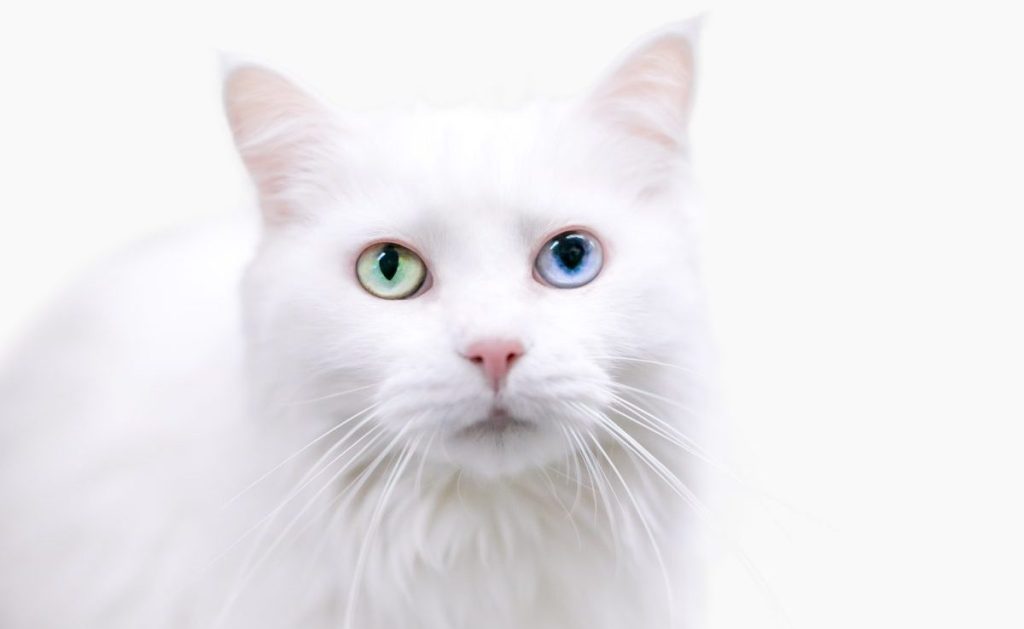The Turkish Angora is a captivating and elegant breed known for its long, silky coat, strikingly colored eyes, and graceful demeanor. Originating in Turkey, this breed has a rich history dating back centuries and is often associated with royalty and luxury. Turkish Angoras are medium to large-sized cats with a finely boned and muscular build. Their most distinctive feature is their luxurious, fine-textured coat, which can come in various colors and patterns. Renowned for their intelligence and playful nature, Turkish Angoras are highly interactive, vocally communicative, and enjoy engaging with their human companions. With a sociable and affectionate temperament, these cats also make loving and devoted additions to households that appreciate their beauty and engaging personalities.
The Turkish Angora cat, a breed steeped in mystique and elegance, is a true symbol of feline grace and charm. They are also one of the oldest naturally occurring cat breeds, and their existence is mixed with tales of royalty, mythology, and cultural significance. Ottoman royalty cherished Turkish Angoras, where the breed received the highest regard.
When considering a Turkish Angora, it’s advisable to prioritize adopting from rescue organizations or shelters to provide a loving home to a cat in need. However, if you decide to purchase a Turkish Angora kitten, it’s crucial to choose a reputable breeder. Conduct thorough research to ensure that the breeder follows ethical practices and prioritizes the well-being of their cats. Reputable Turkish Angora breeders prioritize the health and temperament of their cats, conduct necessary health screenings, and provide a nurturing environment for the kitties.
Quick Facts
- Origin: Turkey
- Size: Medium
- Breed group: Natural
- Lifespan: 12-18 years
- Coat: Long, silky coat with a variety of colors and patterns, but most commonly white
- Temperament: Intelligent, playful, and affectionate
- Exercise needs: Moderate
- Training: Very trainable
- Grooming: Moderate
- Health: Generally healthy, but prone to certain health conditions, such as deafness, hypertrophic cardiomyopathy (HCM), and ataxia.
- Legend claims the Islamic prophet, Muhammed, owned a Turkish Angora named Muezza (Cherished).
- The most widely known Turkish Angora is Duchess from The Aristocats movie.
Turkish Angora Pictures
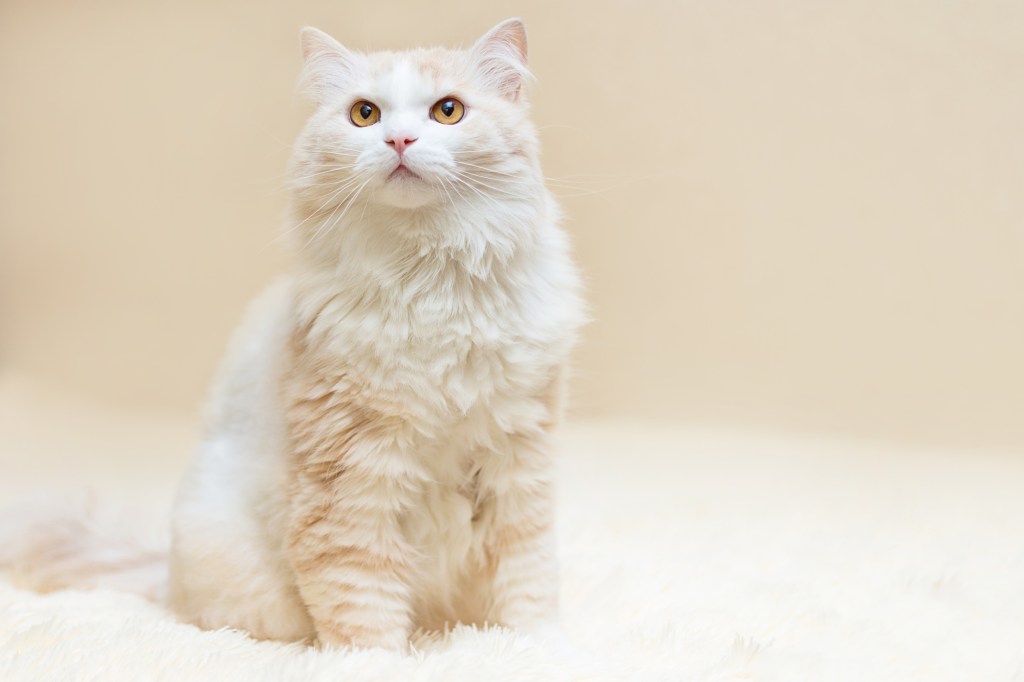
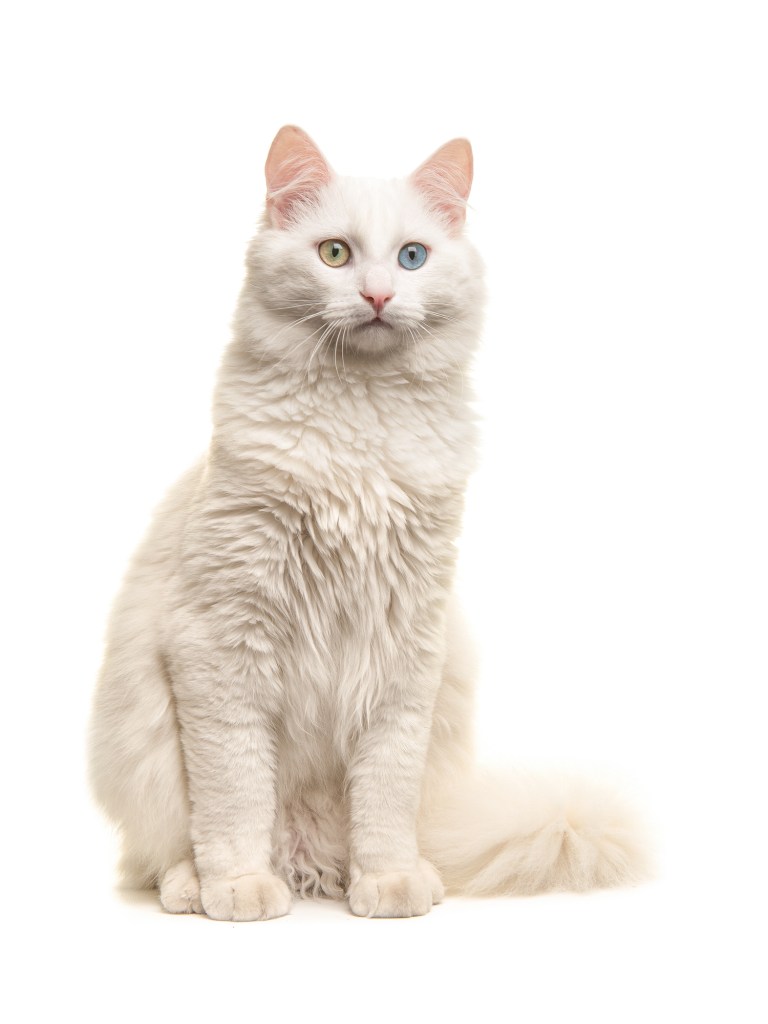
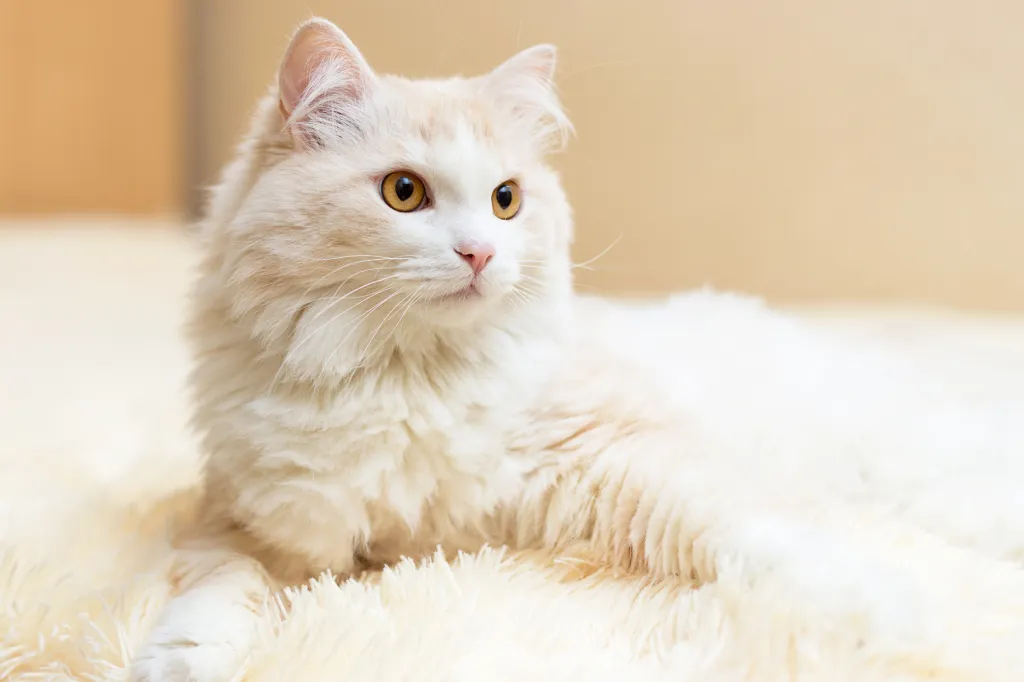
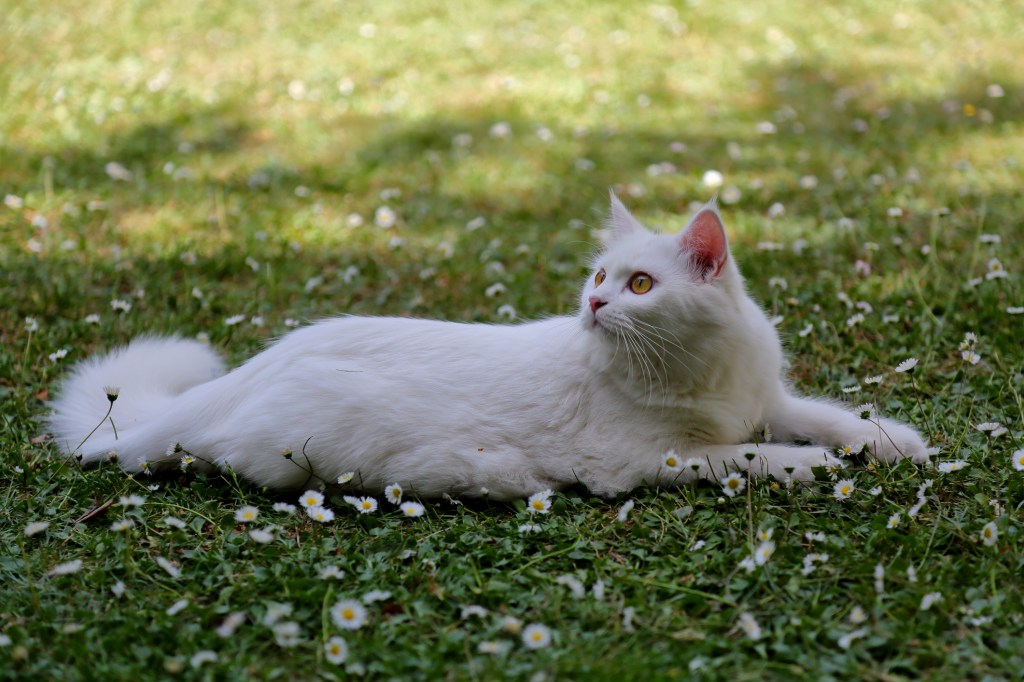
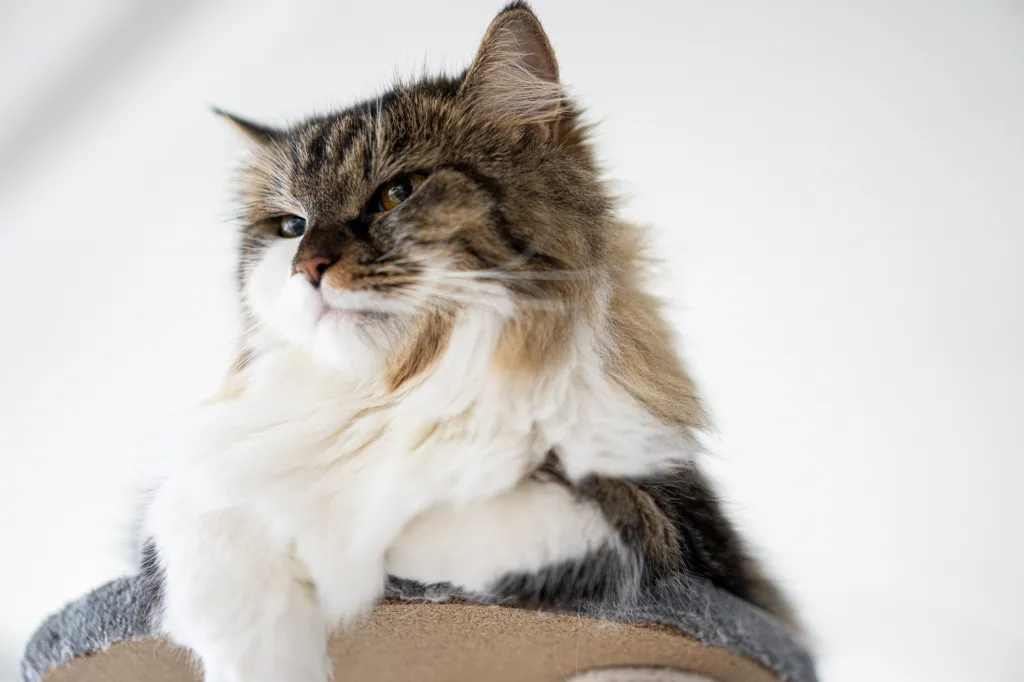
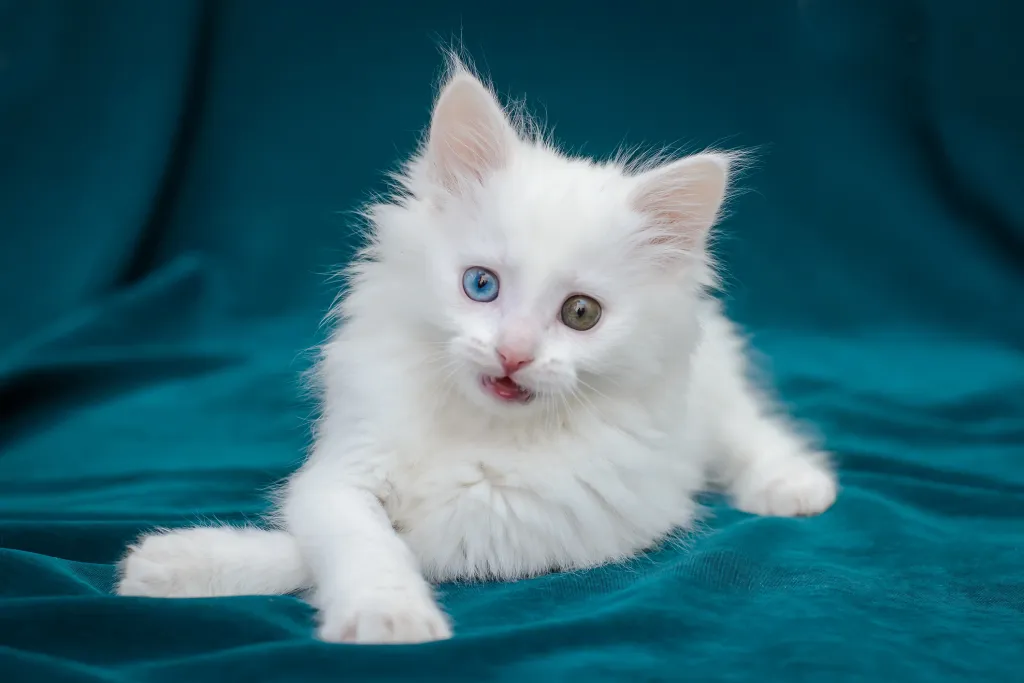
-
Affectionate with Family
Some cat breeds are typically independent and aloof, even if they’ve been raised by the same person since kittenhood; others bond closely to one person and are indifferent to everyone else; and some shower the whole family with affection. Breed isn’t the only factor that goes into affection levels; cats who were raised inside a home with people around feel more comfortable with humans and bond more easily.

See Cats Less Affectionate with Family -
Amount of Shedding
If you’re going to share your home with a cat, you’ll need to deal with some level of cat hair on your clothes and in your house. However, shedding does vary among the breeds. If you’re a neatnik, you’ll need to either pick a low-shedding breed or relax your standards. This furniture cover can make it easier to clean up cat hair and keep it off your sofa!
-
General Health
Due to poor breeding practices, some breeds are prone to certain genetic health problems. This doesn’t mean that every cat of that breed will develop those diseases; it just means that they’re at an increased risk. If you’re looking only for purebred cats or kittens, it’s a good idea to find out which genetic illnesses are common to the breed you’re interested in.
-
Potential for Playfulness
Some cats are perpetual kittens—full of energy and mischief—while others are more serious and sedate. Although a playful kitten sounds endearing, consider how many games of chase the mouse-toy you want to play each day, and whether you have kids or other animals who can stand in as playmates. A classic wand cat toy like this one is perfect for playful felines!
-
Tendency to Vocalize
Some breeds sound off more often than others with meows, yowls, and chattering. When choosing a breed, think about how the cat vocalizes and how often. If constant “conversation” drives you crazy, consider a kitty less likely to chat.
-
Kid-Friendly
Being tolerant of children, sturdy enough to handle the heavy-handed pets and hugs they can dish out, and having a nonchalant attitude toward running, screaming youngsters are all traits that make a kid-friendly cat. Our ratings are generalizations, and they’re not a guarantee of how any breed or individual cat will behave; cats from any breed can be good with children based on their past experiences and personality.
-
Friendly Toward Strangers
Stranger-friendly cats will greet guests with a curious glance or a playful approach; others are shy or indifferent, perhaps even hiding under furniture or skedaddling to another room. However, no matter what the breed, a cat who was exposed to lots of different types, ages, sizes, and shapes of people as a kitten will respond better to strangers as an adult.
-
Easy to Groom
Some breeds require very little in the way of grooming; others require regular brushing to stay clean and healthy. Consider whether you have the time and patience for a cat who needs daily brushing. You should definitely pick up this awesome de-shedding tool for cats of any hair length!
-
Intelligence
Some cat breeds are reputed to be smarter than others. But all cats, if deprived the mental stimulation they need, will make their own busy work. Interactive cat toys are a good way to give a cat a brain workout and keep them out of mischief. This scratcher cat toy can keep your smart kitty busy even when you’re not home!
-
Pet Friendly
Friendliness toward other household animals and friendliness toward humans are two completely different things. Some cats are more likely than others to be accepting of other pets in the home.
Turkish Angora History
The longhaired Angora cat is not the source for angora sweaters, although his fur is certainly just as soft and beautiful. This natural breed takes his name from the city of Ankara in Turkey, which was formerly known as Angora.
For centuries, the cats have been attractive souvenirs for invaders of or visitors to Turkey and may have been the first longhaired cats to arrive in Europe. One theory suggests that Vikings brought them from Turkey more than a thousand years ago. The cats eventually became scarce and were saved only through a breeding program originated by the Ankara Zoo.
Angoras were first brought to the United States in 1954. Breeders took an interest in them, but it wasn’t until the mid-1960s that recognition for the breed was sought from the Cat Fanciers Association. The CFA began registering the cats in 1968 and granted full recognition to white Turkish Angoras in 1972. Colored Turkish Angoras were accepted in 1978. Today the cats are recognized by most North American cat registries.
Turkish Angora Size
The Turkish Angora is a small to medium-size cat, weighing 5 to 9 pounds.
Turkish Angora Personality
Beautiful and elegant on the surface, the Turkish Angora can surprise an unsuspecting owner with his athleticism and intelligence. No bookcase is too high for him to reach the top, and no closed door is safe from being opened by his questing paws. While he certainly can have lovely manners, the Turkey, as he is sometimes nicknamed, has an active, boisterous side to his nature, with a cleverness that makes him endlessly entertaining. He likes to play and will do whatever is necessary to get and keep your attention, even if it means getting into a little trouble.
The Angora keeps his kittenlike playfulness well into old age. He is friendly toward guests but loves his own people best. This is a sociable breed who is best suited to a home where he will have another cat or a dog to keep him company if people aren’t home during the day. When you are home, the Angora may drape himself across your shoulders or settle comfortably into your lap. At night you’re likely to find him next to you with his head resting on your pillow.
To live happily with a Turkey, you should have a sense of humor that matches his own, as well as a good store of patience. Once he gets an idea into his head, it can be difficult to change his mind about how he should behave, but he is so charming that you probably won’t care. If you will, it’s best to consider another breed. This is an affectionate, gentle cat who is devoted to his family, but his precocious intelligence, resourcefulness, desire for interaction and play, and short attention span may make him a challenge to live with.
Turkish Angora Health
Both pedigreed cats and mixed-breed cats have varying incidences of health problems that may be genetic in nature. Here are common health issues seen in Turkish Angora cats:
- Deafness: including congenital deafness, is a condition that can affect cats of any breed, including Turkish Angora cats. Deafness in Turkish Angora cats can result from various factors, including genetics and other causes. Turkish Angoras are generally healthy, but solid white cats with one or two blue eyes are prone to deafness in one or both ears.
- Ataxia: Ataxia is a neurological condition characterized by a lack of coordination in voluntary muscle movements. It can affect cats of any breed, including Turkish Angora cats. Ataxia may result from various underlying causes, and it can manifest in different ways, depending on the severity and location of the neurological problem. This disorder affects very young kittens at 2 to 4 weeks of age.
- Hypertrophic Cardiomyopathy: Hypertrophic cardiomyopathy (HCM) is the most common form of heart disease in cats and is characterized by the thickening of the heart muscle. HCM affects the heart’s ability to pump blood effectively and can lead to serious health problems.
Turkish Angora Care
The Turkish Angora has a single coat with a silky texture. Because there’s no undercoat to cause mats or tangles, it’s easy to groom with weekly combing or brushing, and it sheds very little. The coat doesn’t achieve its full length until the cat is approximately two years old.
Brush the teeth to prevent periodontal disease. Daily dental hygiene is best, but weekly brushing is better than nothing. Trim the nails every couple of weeks. Wipe the corners of the eyes with a soft, damp cloth to remove any discharge. Use a separate area of the cloth for each eye so you don’t run the risk of spreading any infection.
Check the ears weekly. If they look dirty, wipe them out with a cotton ball or soft damp cloth moistened with a 50-50 mixture of cider vinegar and warm water. Avoid using cotton swabs, which can damage the interior of the ear.
Keep the Angora’s litter box spotlessly clean. Cats are very particular about bathroom hygiene, and a clean litter box will also help to keep the long coat clean. It’s a good idea to keep a Turkish Angora as an indoor-only cat to protect him from diseases spread by other cats, attacks by dogs or coyotes, and the other dangers that face cats who go outdoors, such as being hit by a car. Turkish Angoras who go outdoors also run the risk of being stolen by someone who would like to have such a beautiful cat without paying for it.
Turkish Angora Coat Color And Grooming
The Turkish Angora is best known for his long, fine, silky coat, which seems to shimmer as he moves. The length of the coat varies, with the longest hair usually seen in the ruff around the neck, the “britches” on the upper hind legs and the plumed tail.
You may think of an Angora as being solid white, but the coat can also be other solid colors as well as tabby, tortoiseshell, calico or other patterns. Beneath the coat is a body that is firm, long and muscular. Legs are long, with the hind legs being longer than the front legs, and the paws are small, round and dainty, often with tufts of fur between the toes. The long tail tapers from a wide base to a narrow end.
Contributing to the cat’s beauty is a small to medium-size wedge-shaped head with large ears that sit high on the head and are tufted with fur and large almond-shaped eyes that slant slightly upward. The eyes can be blue, green, gold, amber or odd (one blue eye and one green, green-gold or amber eye).
Children And Other Pets
The Angora who has been well socialized is comfortable with kids, making him a good choice for families who will supervise children to make sure they pet the cat nicely and don’t pull his fur or tail. He is happy to live with cat-friendly dogs, too, as long as they recognize that he’s in charge. Introduce pets slowly and in controlled circumstances to ensure that they learn to get along together.
Turkish Angora Rescue Groups
More Info For You
If you’re also looking for a dog, check out DogTime’s dog breed page!
